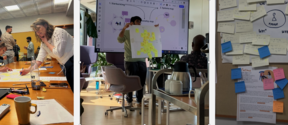The role of infrastructure in facilitating cross-disciplinarity
Raine Mäntysalo, professor, HoD, School of Engineering, Department of Built Environment
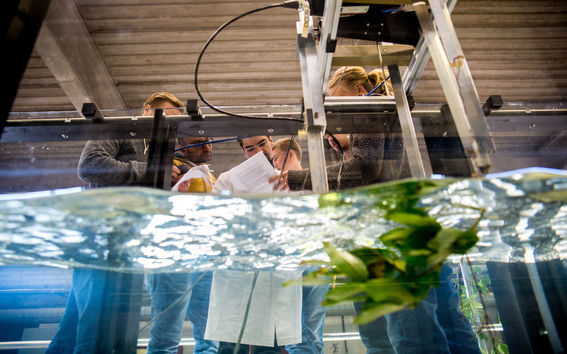
In Aalto University, encouraging cross-disciplinarity, between researchers from different disciplines and in students’ study path choices, has been a major motivator behind the decision to concentrate all Schools of Aalto to a single campus. Further, ‘factories’ and platforms have been established for cross-disciplinary collaboration in specific areas of interest. Examples of the latter include Design Factory that offers prototyping facilities, joint projects with industry and educational support for innovative product development; Aalto Factory of the Future that serves as a platform for projects applying advanced information technologies in future production systems and industrial automation; and AaltoTEXTILES that links textile-material related activities in Aalto, including design, chemical engineering and business.
How do such facilities enable cross-disciplinarity? Is it just about making different people meet in shared spaces, and then hoping for them to engage in fruitful and boundary-crossing dialogues? Or can these spaces, with their infrastructures and equipment, have a more contributory role in facilitating cross-disciplinarity?
An illustrative case of using the shared spaces and facilities as a resource for cross-disciplinarity is the establishment of the Massachusetts Institute of Technology Radiation Laboratory (MIT Rad Lab) during WWII. The MIT Rad Lab was hastily established in 1940 for the development of radar systems to prevent Nazi Germany from bombarding cities and ships of the allied countries. Two floors of a single building were initially designated for the unique collaboration between theoretical physicists and electrical engineers, expected to jointly innovate the blueprint of the radar.
The science historian Peter Galison (1997) has made a detailed historical analysis of how conceptual development went hand in hand with spatial-material arrangements in the initial stages of developing the radar. The arrangement of rooms, desks and equipment was not made to follow disciplinary boundaries, such as having the physicists work in one floor and the engineers in another floor. Instead, the rooms were organized based on an idea of the components of the system to be developed (modulator, magnetron, antenna, receiver and indicator). For example, W. Turner, an electrical engineer, had his desk next to that of H. Neher, a physicist specialized in experimental cosmic ray investigation. In turn, W. Hall, an electrical engineer experienced in sound recording, shared the indicator corner with A. J. Allen and E. C. Pollard, the former being both a physicist and an electrical engineer, the latter a renowned academic in physics. In Galison’s words, “the physical architecture [of the lab] closely matched the electronic architecture” (Galison, 1997, 817).
“The disposition of personnel indicates that engineers and physicists worked within sight of one another. […] The success [of the MIT Rad Lab] was directly related to the creation of such common domains in which action could proceed even though the physicists and engineers entered into the exchange with radically different understandings of the machinery and techniques involved.” (Galison, 1997, 830.)
This spatial arrangement of face-to-face collaboration between the engineers and physicists facilitated a new kind of interaction between the disciplines involved. Julian Schwinger (who later would become a physics Nobel Laureate) had a critical role in configuring this boundary-crossing interaction conceptually. Originally, he had a task of working with a usable model of microwave networks for the radar’s components, but the problem was that ordinary network theory was useless in radar design. Eventually, Schwinger turned to microwave field theory. He started searching for appropriate measures to apply the practical ‘input-output’ representations of electrical engineering in modelling microwave processes. He came up with “simple ‘equivalent circuits’ that imitated just the relevant aspects of the components” (Galison, 1997, 821). Thereby Schwinger enabled the blackboxing of certain complex equations of microwave field theory, for the engineers to then proceed on their practical tasks of radar design. “[He] manufactured a meeting point that both physicists and engineers could understand and that both could link to their larger concerns – on one side to the concepts of Maxwellian field theory, on the other to the practices of radio engineering” (Galison, 1997, 822).
In Galison’s view, what took place in this creative interaction was more than just ‘translation’ of microwave physics into the language of electrical engineering, but the emergence of a ‘true pidgin’ –borrowing a term familiar in linguistic anthropology. Pidgin is a grammatically simplified form of a language used for communication and exchange between people who do not share a common language. In many colonized communities in the 16th and 17th centuries, pidgins developed so that elements from local languages were mixed with simplified forms of English, Dutch, Spanish or Portuguese. According to Galison, pidgins may also emerge in cross-disciplinary interaction between scientists and experts in certain shared material-spatial environments. Galison (1997) calls such pidgins trading zones. A trading zone is a simplified “exchange language” for the mutual “out-talk” between members of different epistemic cultures, such as the simplified out-talk of microwave field theory of physics to electrical engineers in terms of black boxes in input-output circuitries. A trading zone is a platform where highly elaborate and complicated issues can be translated into “thin descriptions” for the purposes of exchanging information and services between scientists and experts of different fields.
Such development of a trading zone is not based on linguistic innovativeness alone. Alongside new linguistic associations, metaphors and ‘translated’ formulas, also other types of connections between disciplines are created, having a more tangible character. According to Sylvain Lenfle and Jonas Söderlund (2019), besides new linguistic representations, also material representations and project management tools are involved. Innovating new interlinguistic concepts goes hand in hand with working on material prototypes, simulations and drawings, and this hybrid co-working is managed by shared goals, scheduling, milestones and project management tools. The cross-disciplinary project of radar development in the MIT Lab is rather to be seen as an evolving infrastructure of linguistic concepts, material artefacts and management tools, all assembled to enable the formation of a hybrid linguistic-material-spatial practice of cross-disciplinary collaboration.
So, learning from the MIT Lab case, beyond just having different people meet in shared spaces, much more is involved in generating facilities for successful cross-disciplinary collaboration. It is, first of all, about a shared sense of urgency of resolving a complex problem, and a recognition by the different parties tackling it of their mutual dependence of each other’s knowledge, skills and resources. Then, it is about arranging spatial facilities, hardware and software for co-working in situ, and about managing this co-working as a project. Developing interlinguistic concepts and metaphors across disciplines are of course key, but they are not developed in a ‘vacuum’ but in the hybrid practices of working together in concrete material-spatial conditions, with a shared motivation and sense of direction and milestones toward a mutual goal of resolving the problem. It is not about inter-disciplinarity as a goal in itself, but as a means for resolving the complex problem that transcends disciplinary boundaries. This is not to say that a new hybrid discipline could not emerge from such a temporary trading zone. On the contrary, it is indeed so that from such spatially and temporally limited innovative platforms new hybrid disciplines emerge, such as electromagnetism and radiological engineering.
References
Galison, P. (1997). Image and Logic: A Material Culture of Microphysics. Chicago, IL: University of Chicago Press.
Lenfle, S. & Söderlund, J. (2019). Large-Scale Innovative Projects as Temporary Trading Zones: Toward an Interlanguage Theory. Organization Studies, 40(11), 1713-1739. Available at: https://doi.org/10.1177/0170840618789201
Show other posts from this blog
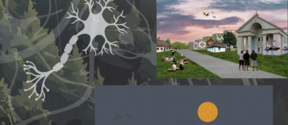
Fostering Border Crossing Creativity
This text highlights essential mindsets in radical creative leadership and some core concepts for fostering border crossing creativity based on discussions, workshops, and interviews organised by the Co-How team.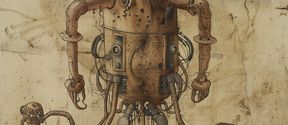
Recommendations Towards Critical Trans-Disciplinarity
We would like to propose the following recommendations for the basis of strategic tools and methods for radically creative trans-disciplinarity.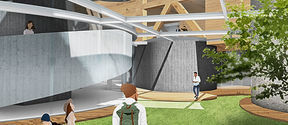
Consequential Pragmatism
This blog text discusses methods which combine critical thinking with practicality in architectural design process.